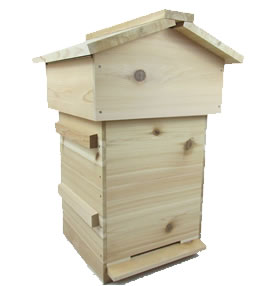Understanding the Hive: A Comprehensive Guide
A hive is a structured enclosure or dwelling constructed by honeybees to house their colony. It serves as the central hub where bees live, raise their brood, store food, and carry out essential activities vital for colony survival and growth. Hives come in various shapes, sizes, and designs, each serving specific purposes and catering to the needs of the bee colony.
Components of a Hive
A typical hive consists of several key components, each playing a crucial role in supporting the bee colony:
- Bottom Board: The bottom board serves as the foundation of the hive, providing a stable platform on which the rest of the hive components are built.
- Boxes: Hive boxes, also known as supers or brood chambers, are stacked vertically to provide living space for the bee colony. They come in different sizes, including deep, medium, and shallow, and serve specific functions such as brood rearing or honey storage.
- Frames: Frames are removable structures within the hive boxes that hold beeswax foundation or comb guides. They provide structural support for the honeycomb and allow beekeepers to easily inspect, manipulate, and extract honey from the hive.
- Honeycomb: Honeycomb is a series of hexagonal cells constructed by bees using beeswax. It serves as storage for honey, pollen, and brood rearing, providing essential nutrients and shelter for the colony.
- Inner Cover: The inner cover is placed above the top box of the hive to regulate temperature and moisture levels within the hive. It helps maintain optimal hive conditions and prevents excessive heat loss or moisture buildup.
- Outer Cover: The outer cover, also known as the hive roof, protects the hive from the elements such as rain, wind, and extreme temperatures. It helps insulate the hive and provides additional protection against pests and predators.
Types of Hives
There are several types of hives used in beekeeping, each with its unique characteristics and benefits:
- Langstroth Hive: The Langstroth hive is a popular hive design characterized by its modular, vertically stacked structure and removable frames. It offers excellent versatility and scalability, making it suitable for both beginners and experienced beekeepers.
- Top-Bar Hive: The top-bar hive features bars placed horizontally across the top of the hive, with bees building comb downward from the bars. It is known for its simplicity and minimalistic design, making it ideal for natural beekeeping practices.
- Warre Hive: The Warre hive is a vertical hive design with stacked boxes resembling a traditional beehive. It emphasizes natural beekeeping methods and hive management, promoting minimal intervention and allowing bees to build their comb freely.
- Flow Hive: The Flow Hive is a modern hive design that incorporates a unique honey extraction mechanism, allowing beekeepers to harvest honey directly from the hive without disturbing the bees. It offers convenience and ease of use, making honey harvesting more accessible for beekeepers of all levels.
Conclusion
In conclusion, a hive is more than just a structure for honeybees—it is the heart of the colony, providing shelter, sustenance, and support for the bees' essential activities. Understanding the components and types of hives is crucial for beekeepers to effectively manage their colonies and promote bee health and productivity.
Whether you're a beginner beekeeper or an experienced apiarist, the hive remains a symbol of the intricate relationship between humans and bees, reflecting centuries of knowledge, innovation, and stewardship in the art and science of beekeeping.



